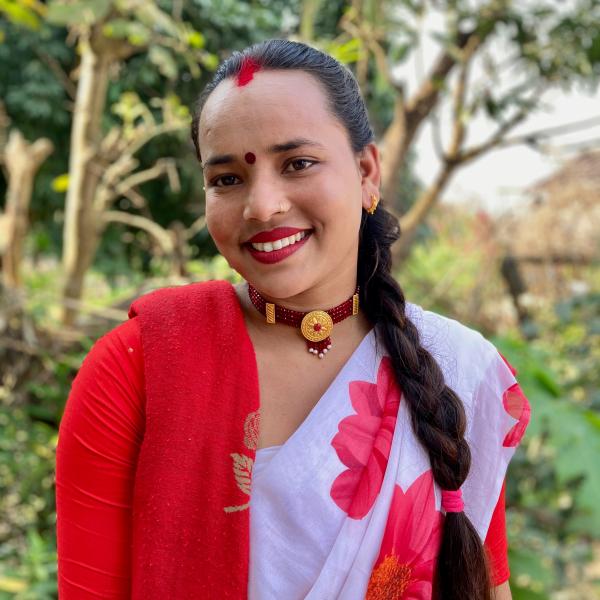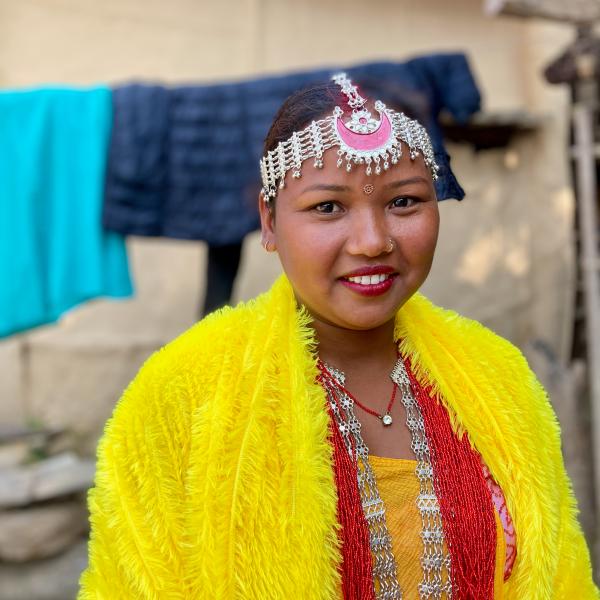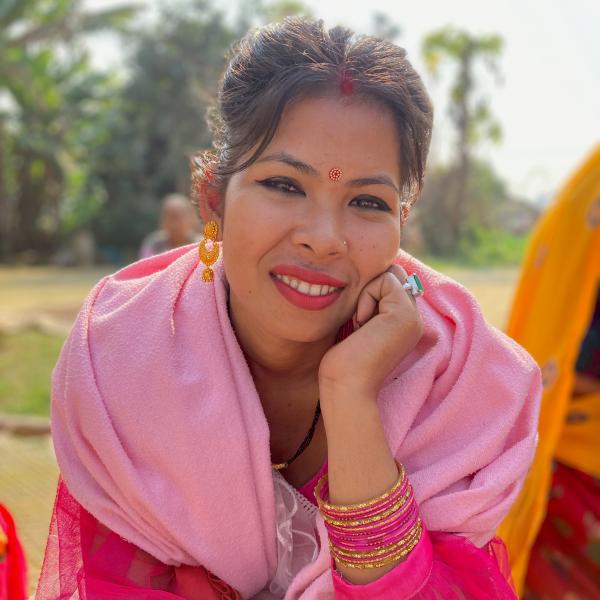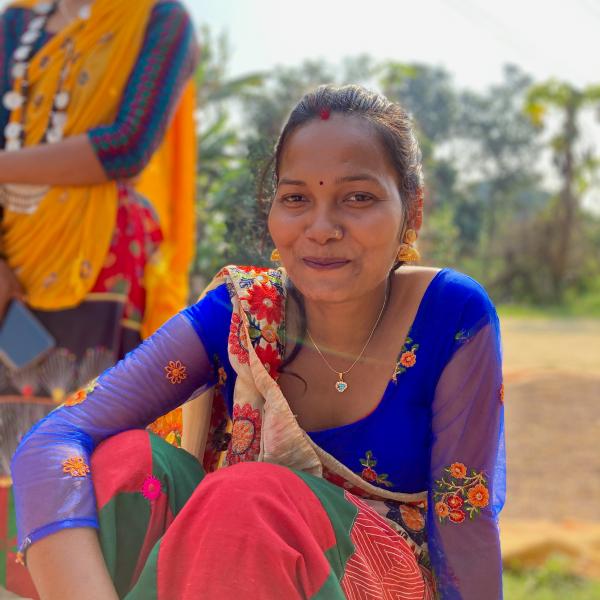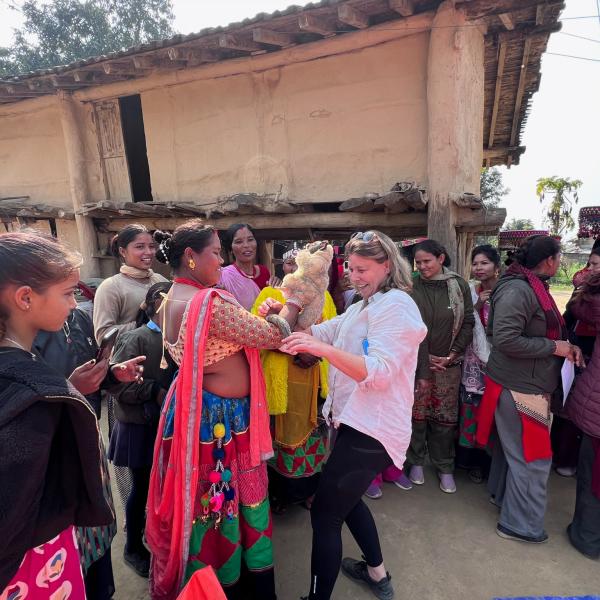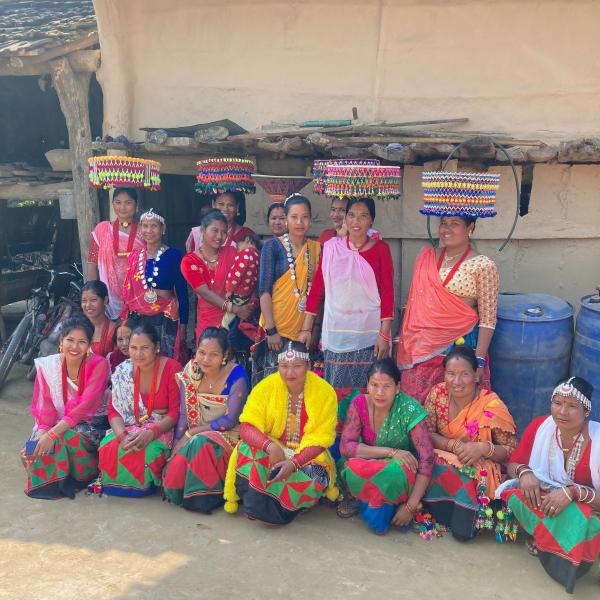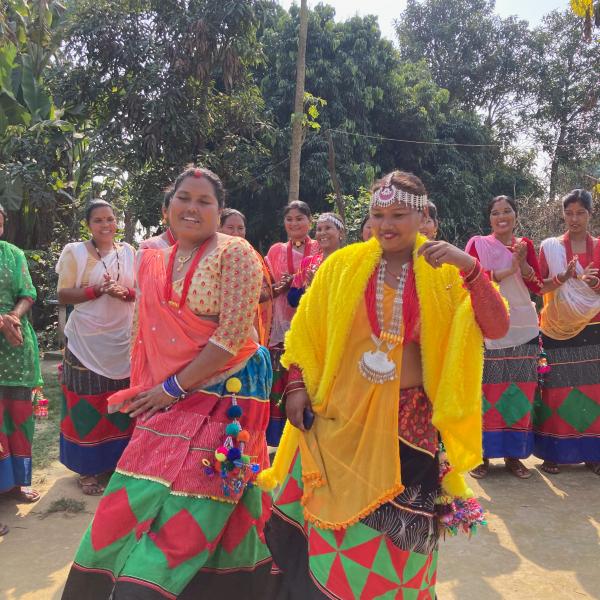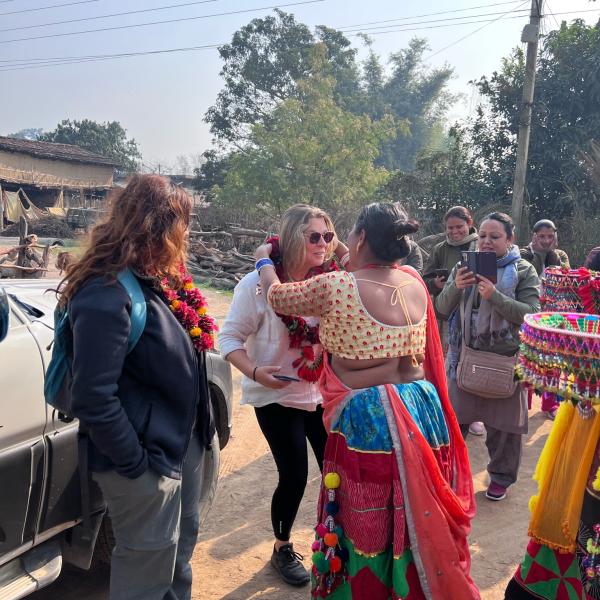
Not the story we expect...
But definitely the story we need
By Cath Taylor
Published 5 Sep 2023
In a dusty community on Nepal’s terrai, I’m being showered with flower petals.
Walking through a tunnel of honour, the blossoms find their way inside my shirt, and later I find them tucked in one ear.
In a strange way, they're a foretaste of beauty to come.
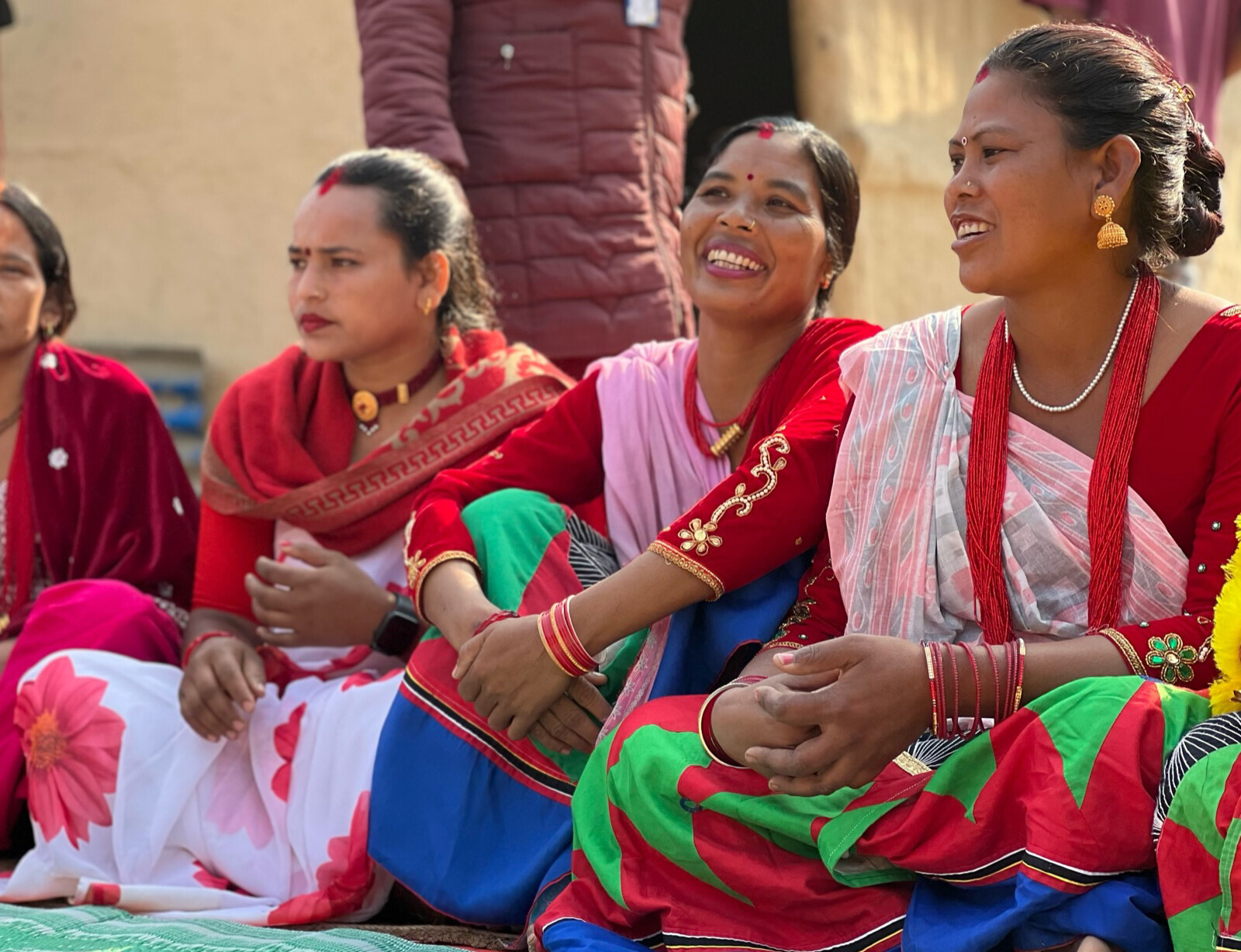
Just to be clear, I've done absolutely nothing worthy of being lauded in this way... it's just how guests are welcomed.
This community, I’m told, is home to some of Nepal’s most disadvantaged people – they don’t own land; many are without birth certificates and can’t access schooling or government support.
The physical environment can be cruel, oscillating between drought and flood, stoking the constant anxiety of hunger.
And yet here we are, beneath a rain of petals, wearing garlands made by hand.
On a green tarp that quickly becomes slippery with my own sweat, I sit with about twenty women of different ages, some with small children on their laps. Behind them are stringy goats, eager to get in on the action if there’s food involved; small mud brick dwellings, a single tap, a bike.
I hear from the women about their challenges – with the men absent from the community working jobs abroad, they dig and weed, labour in the fields of landlords, cut fodder for the animals, cook for their children and try to keep them focussed on their schooling.
So far, I’m sure this all feels as familiar to you as it does to me.
And yet alongside the hardship, there are other, less explicit stories being told.
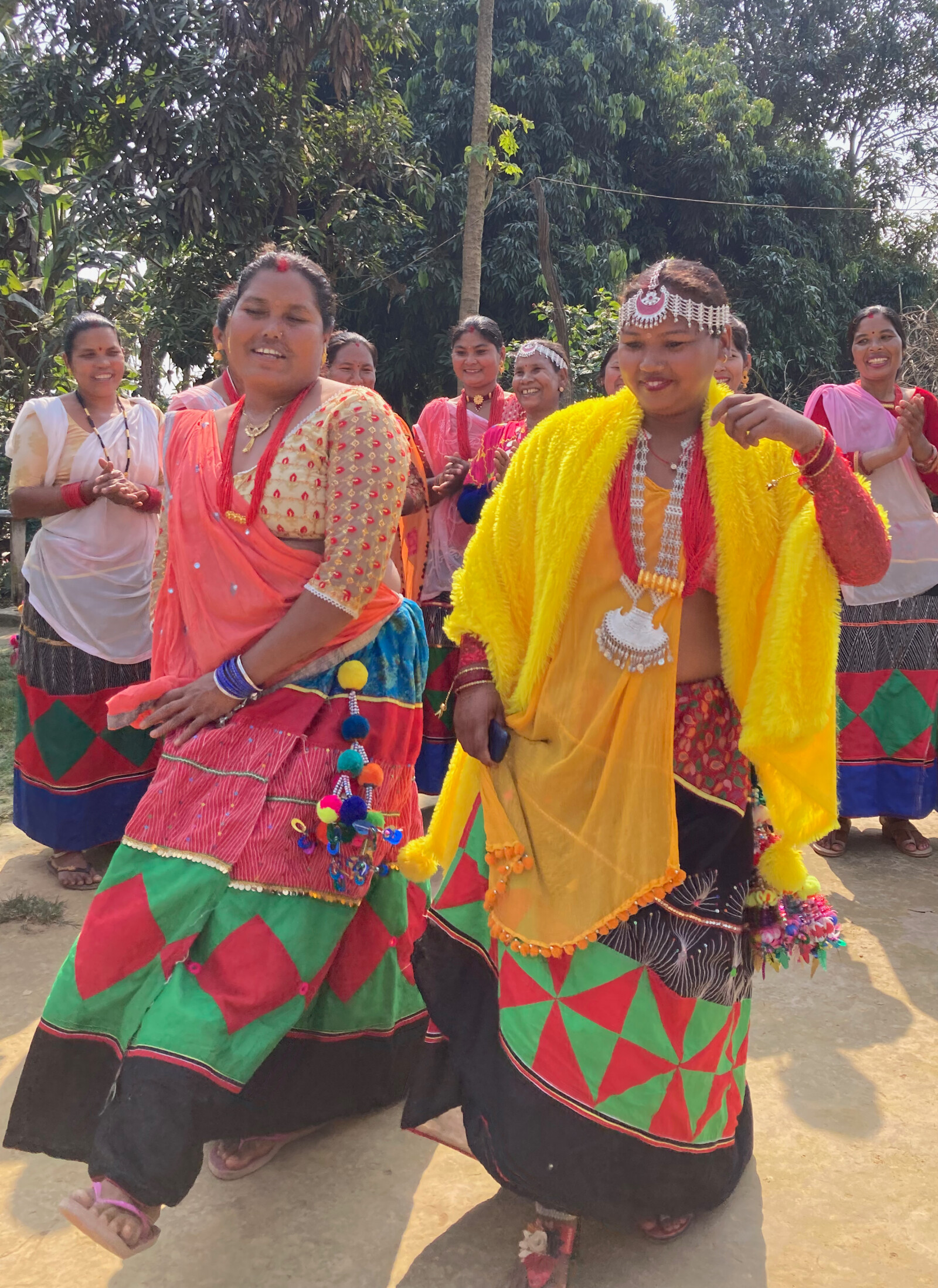
One of the first things I notice about the group is how beautifully they’re dressed – colourful, immaculate traditional clothing that makes me look seriously unkempt by comparison.
And as we sit and talk, its clear they’ve looked forward to this moment and planned it carefully. They’re proud of their traditional clothing, the jewellery they’ve guarded at all costs so it can be passed on to their daughters, the colourful baskets they’ve woven by hand.
When I ask to take photos, they pose with that same look of women everywhere when confronted by a lens – some cool and comfortable, some self conscious and shy.
They look critically over my shoulder – some smiling, some grimacing - as I show them their images and check they’re okay to use.
And they laugh. Even though we’re speaking through an interpreter, the banter and asides leap the boundaries of language.
“What’s it like having no men around the place?” I ask one married woman, who I suspect knows more English than she lets on. “Is it tough or just… you know… kind of peaceful?”
She laughs.
“Oh, very peaceful!” she says, definitely cheeky. “So much better!”
We take selfies and I have a supremely awkward moment starring in a TikTok with one of the young men who has come to spectate. I teach the kids the hokey pokey and the women join in; we segue to a traditional dance that they invite me to join and then look on with undisguised glee as I do a really bad job emulating their moves.
The story all this tells is quite different to the one with which we’re most familiar.
As supporters of NGOs like International Nepal Fellowship, what we hear most often is the story of need, the story of injustice, the story in which we can be the hero. We can provide the love, compassion, money and expertise, we’re told, to make someone else’s life more hopeful and whole.
It’s both a true and a critical story – it moves people to give and pray and we can’t do without it.
But it isn’t enough. Here on the terrai, there’s need, yes, and hardship beyond imagining.
But in the foreground, today, there’s joy and playfulness and strength and determination. There’s simple humanity, with the whole range of emotion and experience that humanity entails.
On one level, it seems crazy that this comes as a surprise – deep down, we know that people’s realities are complex and nuanced. And yet inside the world of charity organisations, the need to evoke sympathy and to make donors feel powerful in their giving almost always drowns complexity out.
Providing the full picture of these women – their beauty, their laughter, their joy – helps us move beyond simple charity to the complexity of solidarity.
Solidarity puts the emphasis on justice and the sharing of resources rather than compassion or pity; it highlights the strengths of the people with whom we work and encourages us to listen to their insights as we plan programs together to create change. It acknowledges that we are more alike than perhaps we’ve been led to believe.
In the pursuit of fullness of life, it’s a story that we may not expect, but it’s probably the one that we desperately need.

